As a follow up to a recent post on modern kitchens, we’re discussing contemporary kitchens and how these two kitchen design styles differ.
It’s important to note that when it comes to design, contemporary and modern are not synonymous. Contemporary refers to current trends, while Modern refers to styles that followed the Industrial Revolution and dominated design from the early to mid-1900s. To make things even more confusing, contemporary and modern design styles share several common characteristics. Both styles are dominated by lines and angles, have an emphasis on whites, grays and solids, and lack accessories. But modern style is fairly distinct and rules-driven, while contemporary encompasses elements of several design styles on top of a few of its own dominant characteristics. And some of the best contemporary spaces come out of designs that break these loose to begin with rules.
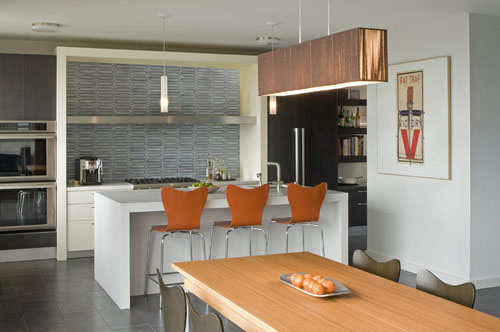
The design choices in this kitchen are all classic examples of contemporary. The rounded chair backs, shiny surfaces, distinct color choices, stacked tile backslash, and dominant rectangular theme all make this space contemporary.
In a contemporary kitchen, you’ll find features that are trendy right now: natural building materials, high-tech appliances, and smart storage solutions. As far as design styles go, look for natural or neutral colors, a blend of sharp angles and rounded corners, and plenty of open space.
Whites, grays, and neutral colors.
Contemporary designs draw attention away from the room’s décor and to the design itself. While white, gray, and neutrals can sound boring or depressing, the designs in our examples show that contemporary designs are anything but dull.
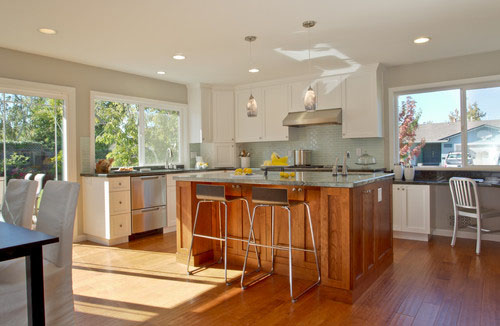
This contemporary kitchen remodel by Case Design/Remodeling of San Jose is the perfect example of how colorless contemporary can be light and bright. Stark white, muted green, and a warm finish on wooden surfaces give this kitchen plenty of life.
A single focal point.
Instead of a lot of embellishment, accessories, artwork, and décor, contemporary designs tend to draw attention to just one or two major elements in the room. This is often through which a contemporary room sneaks a little color into the design.
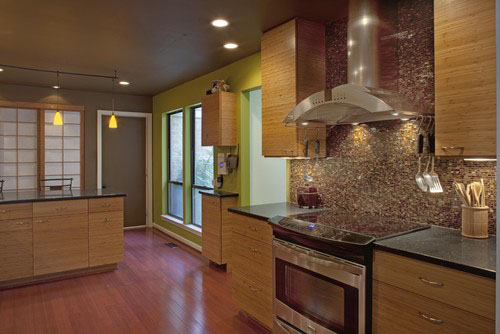
The lime green accent wall and mosaic tile backsplash are the aesthetic centerpieces of this Case Design/Remodeling contemporary kitchen. Sleek surfaces, a mix of natural materials, and the casement windows all add to the contemporary feel. Beautiful backsplashes are common design elements in contemporary kitchens.
A blend of sharp edges and round corners.
Another design element that makes a room overtly contemporary is its synthesis of straight lines and soft edges.
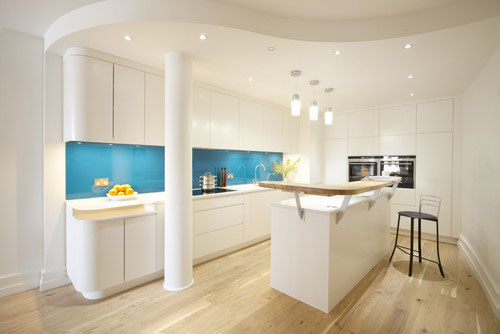
This kitchen by Increation is a beautiful blend of angles and curves. Rounded cabinet edges contrast the sharp corners of the island. Geometric shapes such as the pillar and raised countertop often find a place in contemporary spaces. The curved edge of the lowered ceiling becomes the perfect accent.
Shiny surfaces.
A sleek aesthetic is a major element behind the look of contemporary, and a blend of materials and finishes is usually used to achieve this look.
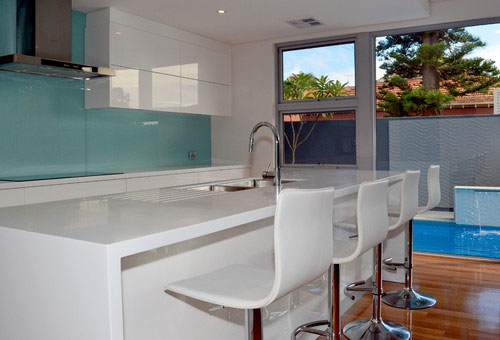
A glass backsplash combines with unadorned high-gloss surfaces and metallic accents to give this contemporary kitchen a sleek, ultra-clean look.
Sleek Appliances.
Stainless steel appliances are one way to keep with the shine of a contemporary kitchen, but black and white appliances are making a comeback these days and have their place in contemporary kitchens too.
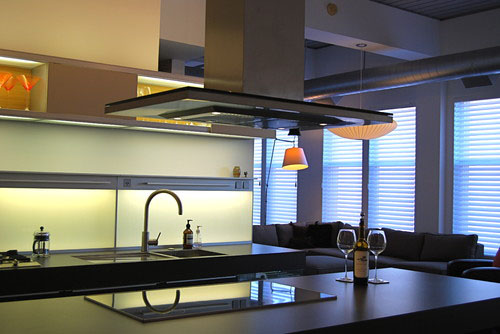
The shape of appliances can also contribute to a contemporary kitchen design. The flush stovetop and matching hood don’t draw the eye away from other design features in this kitchen by Studio M Design.
Windows and open space.
These are two elements not to be ignored when designing a contemporary space. A feeling of open space is another dominant feature in a contemporary room. In the spirit of contemporary, open spaces draw the eye away from the concrete and into the void. Windows can become the perfect focal point in a contemporary room, while a series of stacked or adjacent windows can create the sharp lines and angles that dominate contemporary design. Contemporary spaces like to downplay details and bring focus to the space itself, and windows do exactly that.
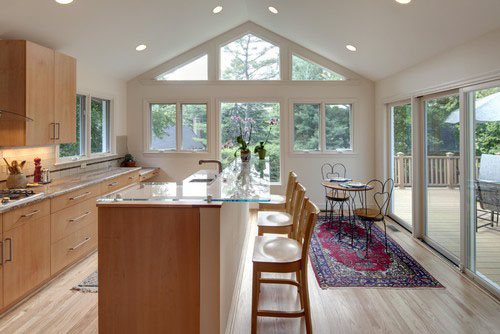
This contemporary Case Design kitchen uses natural light and plenty of large windows to increase the spaciousness of the room while adding geometric shapes and angles to the design.
Hidden Storage.
Cutting edge storage designs keep with current trends and support the clean, clutter-free look of a contemporary kitchen.
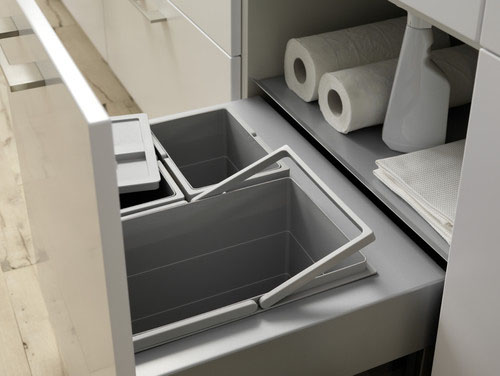
You won’t find a trash can or paper towel dispenser within view in a contemporary kitchen. Pull-out storage and smart designs keep kitchens streamlined. This contemporary trash console is hip to the times with removable bins for garbage, recycling, and compost, plus a storage shelf for cleaning supplies.
The overall feeling.
No single element or feature can make a room contemporary. That’s why it’s so easy to get away with breaking the rules by integrating elements that’s aren’t contemporary at all. Contemporary is simply a combination of many design features that have all drawn from trends of the past while still integrating the best design features of today.
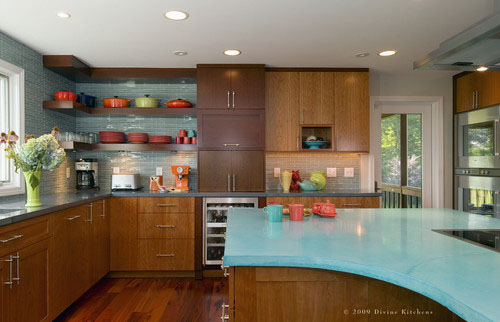
While this kitchen is dominated by bright colors, accessories, and multiple focal points, it is still overwhelmingly contemporary.
Share your own unique contemporary kitchen design ideas with other Case Design readers below.